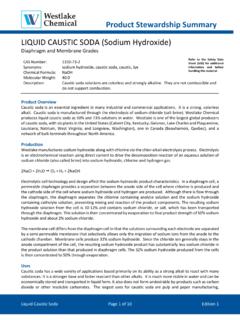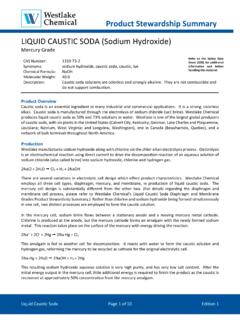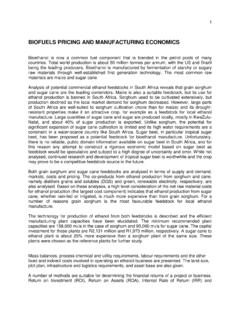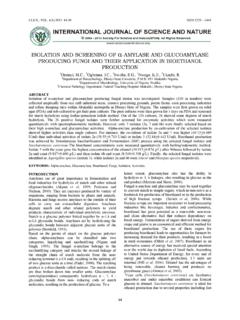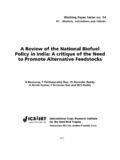Transcription of PELS® ANHYDROUS CAUSTIC BEADS - westlake.com
1 Product Stewardship Summary PELS ANHYDROUS CAUSTIC BEADS . Refer to the Safety Data CAS Number: 1310-73-2 Sheet (SDS) for additional Synonyms: dry sodium hydroxide, beaded CAUSTIC soda, solid CAUSTIC soda BEADS information and before handling this material. Chemical Formula: NaOH. Molecular Weight: Description: PELS ANHYDROUS CAUSTIC BEADS are white and spherical. Dry CAUSTIC soda has a white color and a microcrystalline structure. It is ANHYDROUS , hygroscopic (attracting moisture) and deliquescent (dissolving in moisture absorbed from the atmosphere) and reacts with carbon dioxide in the air to form sodium carbonate.
2 Product Overview PELS ANHYDROUS CAUSTIC BEADS is a convenient form of dry CAUSTIC soda BEADS developed by Axiall Corporation. The tiny BEADS , close to millimeter in diameter, offer superior properties: little or no dust, excellent flow properties, uniform size, excellent blending characteristics, structural strength, high bulk density and low moisture pickup, resulting in less caking or lumping. Axiall Corporation, the only North American producer of beaded CAUSTIC , produces PELS at two plants in the US: Lake Charles, Louisiana, and New Martinsville, West Virginia. Production Axiall produces PELS ANHYDROUS CAUSTIC BEADS with an average diameter of millimeter, corresponding to 25.
3 Mesh. PELS offers superior properties over other forms of beaded CAUSTIC . The spherical shape, having a minimum surface area per pound, minimizes moisture pickup. Freedom from dust on the bead surface also slows moisture pickup. The remarkable size uniformity of PELS eliminates storage bin segregation and reduces the likelihood of hang-up due to bridging. The spherical shape also enables PELS ANHYDROUS CAUSTIC BEADS to roll and flow easily. In CSD (closed system delivery) the closed-loop pneumatic conveying system developed by Axiall for bulk shipping and unloading the BEADS are easier to convey and produce far less dust than flakes.
4 Uses The host of different uses of PELS ANHYDROUS CAUSTIC BEADS is derived mainly from its reactivity as a strong alkali. With all downstream applications, appropriate registrations and/or approvals may be required. Possible uses are described below: Petroleum Exploration - PELS ANHYDROUS CAUSTIC BEADS is used as a treating agent in oil well drilling fluids. It is used to increase viscosity, which prevents heavier materials from settling. Food and Dairy - PELS ANHYDROUS CAUSTIC BEADS is used in various food processing methods. This includes washing and chemical peeling of fruits and vegetables, poultry, soft drink, chocolate and cocoa processing, and thickening ice cream.
5 Textile Treatment - PELS ANHYDROUS CAUSTIC BEADS is used as an aid in scouring, bleaching and neutralizing during textile processing. Chemical Production - Besides its use as a reactive intermediate and catalyst in chemical production, PELS ANHYDROUS CAUSTIC BEADS is also used in chemical processing plants for scrubbing and drying. General and Industrial Cleaning - A strong base like PELS ANHYDROUS CAUSTIC BEADS can be used as an alkali source in cleaning agents. It can dissolve grease, oils, fats and protein based deposits. A PELS. PELS ANHYDROUS CAUSTIC BEADS Page 1 of 8 Edition 3.
6 Product Stewardship Summary CAUSTIC soda solution with added surfactants stabilizes dissolved substances and prevents re-deposition. PELS CAUSTIC soda is also used, for example, to clean and prepare sheet steel in galvanizing plants, and CAUSTIC soda is the chief ingredient for drain pipe cleaners. Soap and Detergent - PELS ANHYDROUS CAUSTIC BEADS saponifies fats into water-soluble sodium soaps. Biodiesel and Bioethanol - In manufacturing biodiesel and bioethanol, PELS ANHYDROUS CAUSTIC BEADS is used as a catalyst for the transesterification of methanol and triglycerides, and used for pH adjustment and formation of in situ sodium methylate.
7 ANHYDROUS PELS is required, because the presence of water would form soap. Metal Cleaning - PELS ANHYDROUS CAUSTIC BEADS can clean metals by saponifying surface oils to create a thin soapy layer. In certain types of metals it can be used to etch the surface, an important preparatory step in many welding or painting applications. General Industrial - PELS ANHYDROUS CAUSTIC BEADS is used in a variety of plants making products ranging from glue, gelatin, grease and cosmetics to dry batteries, agricultural products, and paint and varnish removers. Health Effects Read and follow all instructions on the product label and review the Safety Data Sheet (SDS) to understand and avoid the hazards associated with CAUSTIC soda.
8 Wear appropriate personal protective equipment and avoid direct contact. Eye contact with PELS ANHYDROUS CAUSTIC BEADS causes serious eye damage including irreversible damage and blindness; repeated or prolonged exposure may cause conjunctivitis. Skin contact causes severe burns; repeated or prolonged exposure to skin will cause dermatitis. Ingestion of PELS ANHYDROUS CAUSTIC BEADS may cause irreversible damage to mucous membranes; repeated or prolonged exposure may cause gastrointestinal disturbances. Inhalation of PELS ANHYDROUS CAUSTIC BEADS may cause corrosive burns, including irreversible damage; repeated or prolonged exposure to corrosive materials or fumes may cause bronchial irritation with chronic cough.
9 The United States Occupational Safety and Health Administration (OSHA) and the American Conference of Governmental Industrial Hygienists (ACGIH) have established or recommended occupational airborne exposure limits for CAUSTIC soda. The OSHA Permissible Exposure Limit (PEL) is an 8 hour Time-Weighted Average (TWA) of 2 mg/m3 (milligrams per cubic meter). The ACGIH Threshold Limit Value (TLV) is a Ceiling Limit of 2 mg/m 3. A. Ceiling Limit should not be exceeded during any part of the working exposure. Before handling, it is important that engineering controls are operating and protective equipment requirements and personal hygiene measures are being followed.
10 People working with this chemical should be properly trained regarding its hazards and its safe use and should be given the opportunity to review this document and the safety data sheet. Environmental Effects PELS ANHYDROUS CAUSTIC BEADS should be kept out of lakes, streams, ponds, or other water sources. PELS. ANHYDROUS CAUSTIC BEADS does not bioaccumulate due to its high solubility in water. Exposure Potential Precautions should be taken to minimize potential harm to people, animals and the environment. Potential for exposure may vary depending upon site-specific conditions.





